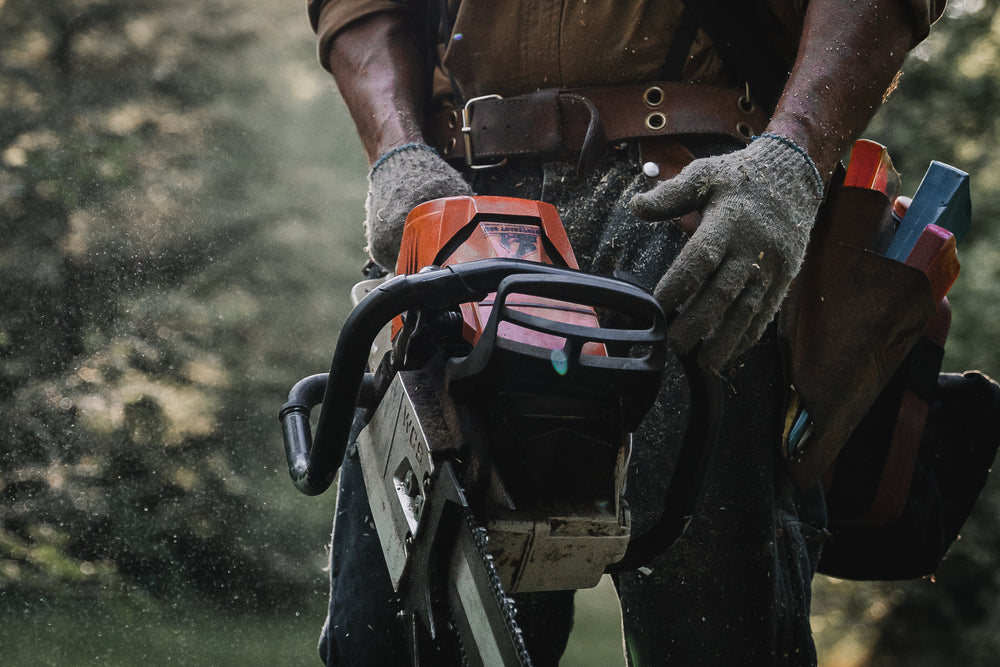How to Identify What Chain You Need for Your Stihl Bar
When it’s time to replace your chainsaw chain, knowing your specs makes all the difference. Buy the wrong size chain and you’re not only wasting money—it can also be unsafe. Whether your chain is worn, you’re upgrading for performance, or just troubleshooting, the key is understanding three numbers stamped right on your Stihl chainsaw bar: pitch, gauge, and drive links.
In this guide, you’ll learn how to read those markings, measure if they’re worn away, and choose between different cutter types and sequences so you get the perfect chain for the job.
Where to Find Chain Details on Your Stihl Chainsaw Bar

Stihl makes things easier by stamping the details right on the bar, usually near the powerhead. Look closely and you’ll typically see:
-
Pitch (e.g., .325", 3/8”, .404”)
-
Gauge (e.g., .050”, .058”, .063”)
-
Drive link count
If oil and sawdust cover the stamp, wipe it clean. If the numbers are worn off, don’t panic—you can still measure them yourself (we’ll show you how below).
Example: If your bar says “.063 gauge, 3/8" pitch, 72 drive links,” you’d be looking at a chain like the Oregon 75EXL Full Comp Chain.
How to Measure Pitch, Gauge, and Drive Links
Pitch
Pitch is the spacing between chain rivets. To measure, pick any three rivets, measure across, and divide by two. Common pitches: 1/4", .325", 3/8", .404".
Gauge
Gauge is the thickness of the drive link—the part that slides in the bar groove. Too thin, and the chain wobbles; too thick, and it won’t fit. Common gauges: .043", .050", .058", .063".
Drive Links
The drive link count determines chain length. Just lay the chain flat and count. Off by one link? It won’t fit properly.
Understanding Cutter Tooth Types
Different cutter styles change how your saw performs:
-
Full-Chisel → Aggressive chisel-tooth, square-ground cutting is ideal for high-production cutting and felling timber. Great for fast cutting in clean wood. Dulls quickly in dirty conditions.
Try the Oregon 75CK Square Chisel Chain. -
Semi-Chisel → Rounded cutters. Slower but hold an edge longer in dirty, frozen, or storm-damaged wood.
A great option is the Oregon 91VXL 3/8" LP Semi-Chisel Chain. -
Chipper → Old-school round tooth design. Rare today but still robust in harsh environments.
Chain Sequences: Full Comp, Semi-Skip, and Full-Skip
-
Full-Comp: Every other link has a cutter. Smooth and fast—ideal for shorter bars.
Example: Oregon 75CL Square Chisel Full-Comp Chain. -
Semi-Skip: Mix of single and double spacing. Balanced chip clearance and cutting speed.
Check out the Oregon 72CK Semi-Skip Chain. -
Full-Skip: One cutter every two drive links. Best for long bars (24”+) and underpowered saws needing chip clearance.
Go with the Oregon 75EXJ Full Skip Chain.
How to Tell What You’re Running
Combine your three numbers—Pitch + Gauge + Drive Links,then match them with the cutter type and sequence you prefer. Once you know your setup, it’s easy to shop the right replacement chains and keep your saw running safely.
Real-World Scenarios
-
Hardwood logs? Full-chisel chains like the 72 EXL and 75CL give you fast, clean cuts.
-
Doing storm cleanup or cutting firewood? The EXJ and EXL chains, with their chisel tooth round ground design, are an excellent choice.
-
Running a 28” bar for logging? Go with full-skip like the 75CJ for chip clearance and easier sharpening.
Final Thoughts
Checking your bar’s stamp or measuring pitch, gauge, and drive links takes just a few minutes, but it saves you headaches down the line. Once you know your numbers, you can choose the cutter type and sequence that match your cutting style—whether you’re clearing storm damage or running a pro logging setup.
The right chain keeps your saw safe, efficient, and cutting clean. Ready to upgrade? Shop our chainsaw chains today and find the perfect fit for your Stihl bar.


